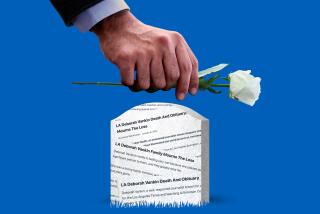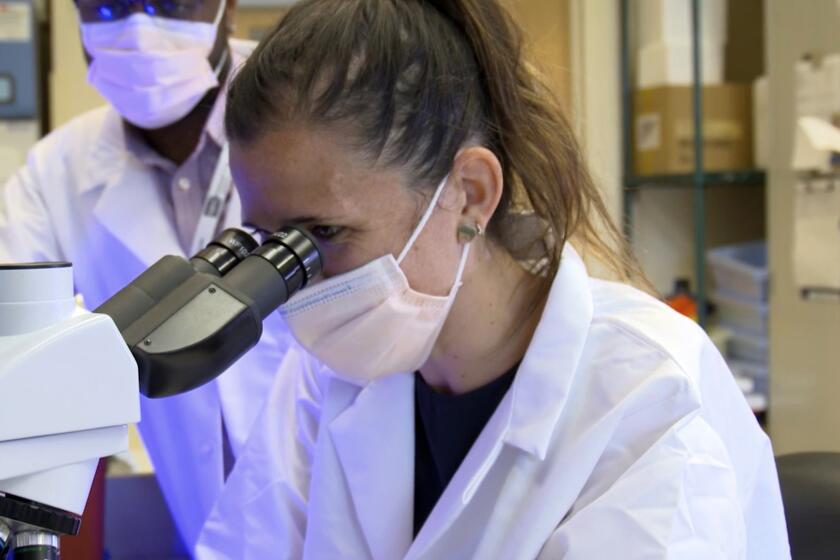This Is No Hoax
- Share via
Any hope of hoax fan Alex Boese finishing his doctorate in the near future has pretty much vanished. Why grind away at a dissertation when you can troll the supermarket checkout racks for headlines such as “Fatima Cover-Up: What the Holy Mother Really Told the Children”?
In the mid-1990s, Boese was a grad student in the history of science at UC San Diego. “I was researching how science was portrayed in 19th century American culture, which led me to P.T. Barnum, a famous hoaxer,” he says. Soon Boese was reveling in the “Cardiff Giant” hoax and other 19th century outrages. “A chapter of my dissertation became the ‘Great Moon Hoax’ [an 1835 New York Sun article claiming that life had been discovered on the Moon].”
Well, “chapter” is used loosely here. “As my wife has often said, I started avoiding the dissertation,” he says. Boese completed his master’s and was approved to start his dissertation in 1997, but that also was the year he set up his virtual hoax museum, www.museumofhoaxes.com. After an editor at Dutton saw a 2001 USA Today article about the site, Boese became the author of “The Museum of Hoaxes: A History of Outrageous Pranks and Deceptions,” recently republished in paperback by Plume Books, a Penguin Group imprint.
There are standards, mind you. Not just any tawdry falsehood qualifies as a hoax. For Boese, 35, a hoax must be sensational and, above all, public. By his definition, a hoax must also be exposed at some point as a deception (Bigfoot and the Loch Ness monster still are open to debate). Boese’s “hoax honor roll of infamy” is all about notoriety, and the wackier the better; think Orson Welles’ infamous “War of the Worlds” radio broadcast in 1938 announcing that Martians had invaded New Jersey. From medieval Europe’s holy relic trade to Snowball, the 87-pound “Monster Cat” whose photo ricocheted around the Internet in 2000, there’s something about an outrageous fabrication that people just can’t resist.
Boese grew up in London and Washington, D.C., the son of an international banker. “I’ve always been interested in weird things,” says Boese, who clearly relishes his current metier. “I don’t debunk anything. There are lots of skeptics out there. There’s something humorous and frivolous, kind of whimsical about it. Hoaxes shed light on how we come to believe things and how that process gets twisted.”
Boese’s nomination for leading hoax generator is the tabloid Weekly World News, which he considers “a humor magazine.” Then there’s the Internet, which Boese says has made hoaxing available to everybody. Exhibit A: www.bonsaikitten.com, created by MIT students, which, he says, “claims to teach people to raise a cat inside a glass jar to get a rectangular or spherical kitten. The FBI investigated it.” He also cites a 1994 e-mail hoax accusing Microsoft of buying the Catholic Church. “So many people believed it [that] Microsoft had to put out a press release saying [they’re] not in the religion business. That has a humor of its own.”
An all-time favorite of Boese and his British wife, Beverley, is a bogus 1957 BBC news report. “It was about the ‘spaghetti harvest’ in Switzerland, with footage of spaghetti farmers pulling it out of the trees,” he says. “Spaghetti was then becoming a part of the British diet, but most people hadn’t thought about the question: Where does spaghetti come from?”
As for perpetrating hoaxes of his own, Boese has just one confession to make. “Sometimes I pretend the Museum of Hoaxes is a real place. I always stop it before it goes too far. I had a schoolteacher who wanted to bring her class to the museum. But if some rich sponsor wants to make it real, I’d love it.”





